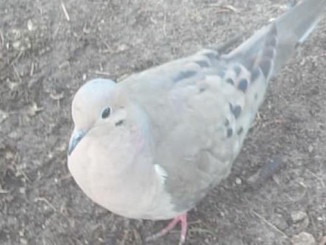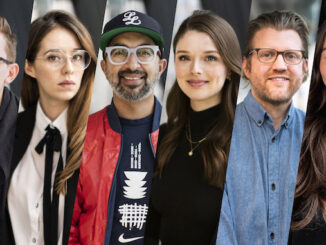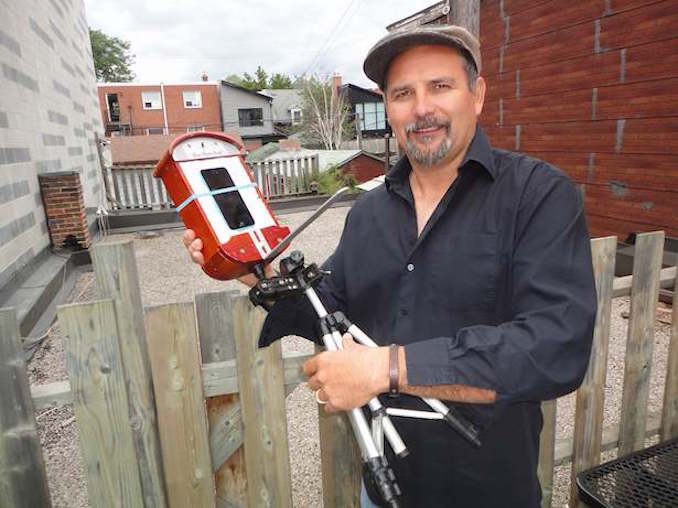
This week, Toronto Bird Photo Booth flew across town to land on the pea gravel roof of a two story building on the north side of Queen St W between Niagara and Bellwoods. Dan Sheridan CEO of TOUGHROOF used the space to shoot a fantastic gallery of images; he chose as background the view looking north over the rear alley. You can read up on how he ended up here, and see more pictures in Commercial Roofer Hosts Week Six bird photo booth story update on the Birds of Toronto website. “These are the birds of Queen St West,” Dan proclaimed with pride, “they will certainly have more character than the other neighbourhood birds!”
Dan Sheridan is an expert commercial industrial roofer who specializes in resurfacing shopping malls and apartment building rooftops. TOUGHROOF is seamless roof exterior which means there’s no place for Mother Nature’s extreme weather, bugs, animals and birds to enter. When Dan sees birds roosting on a client’s roof he gets worried. Birds on the roof means problems which could be as minor as heat loss, or be a sign of more serious issues like ponding water or perforations that have become habitations for cavity dwelling birds.
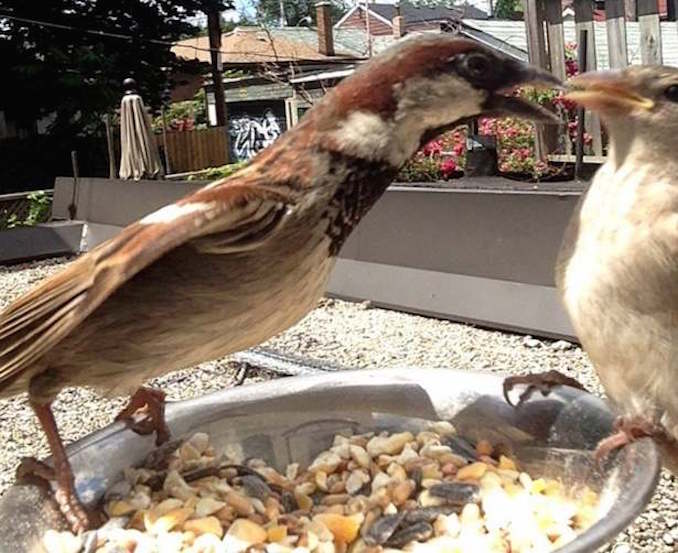
Dan’s keen eye catches even the most minor design issues like water pipes that have been run too close to the edge of the roof that will invariably become roosting rails for pigeons and starlings whose droppings are so acidic they breakdown many roofing substrates, especially tar-based materials. Droppings which are allowed to accumulate on flat roofs will almost certainly destroy the surface filament, break the seal, and cause the roof to leak. All flat roofs should be inspected semi-annually and after major storms. During the walk around, the property manager should pay particular attention to the flashings and inspect sharp bends and places that can open up or may need to be sealed with plastic cement, mesh and spikes.
Dan brought a very small bag of birdseed that appears to be the same sunflower seed and corn mix used by many of the other competitors but the label said ‘for canaries and finches’ and by that I think they meant for small birds. And that’s just what Dan got, the most charismatic small birds yet recorded in the competition and quite representative of Queen St – its clear these birds came to the silver bowl to party.
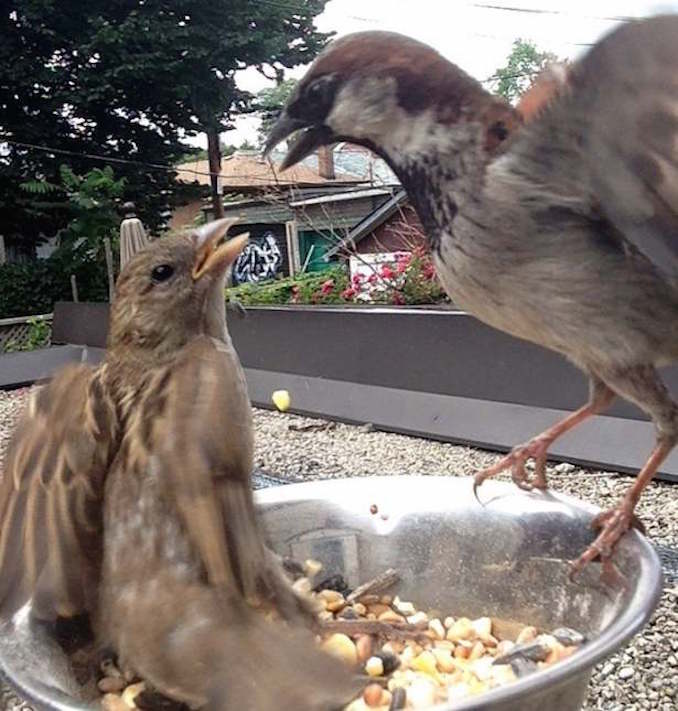
House sparrows are the punks of the bird world.
Unlike the graceful birds of prey that eat what they kill, house sparrows will destroy other birds’ eggs and young just for the fun of it! They are psychopathic and always have been. This bird was among the first animals in the world to be given a proper latin name by Carl Linnaeus, who classified them Passer domesticus in the 1758 10th edition of Systema Naturae. Other early authors described this birds’ caustic personality, and penchant for causing trouble.
For whatever reason, 100 years later this bird species was deliberately imported to North America. City officials introduced House sparrows in Brooklyn, NY in 1851 for the benefit of the city. A second group was imported in 1852, and subsequent introductions occurred in New England and in San Francisco, CA and today of course its the most popular bird on the continent.
House sparrows can easily produce three to five broods per season. As if that is not enough, male sparrows will mate with several females. With three to five eggs in the average clutch, a single pair of house sparrows can quickly become a flock of fifteen to twenty birds in one season, at a single nesting site. Consequently, house sparrow can now be found in all cities, suburbs, and farms and anywhere there are houses, throughout the entire continent.
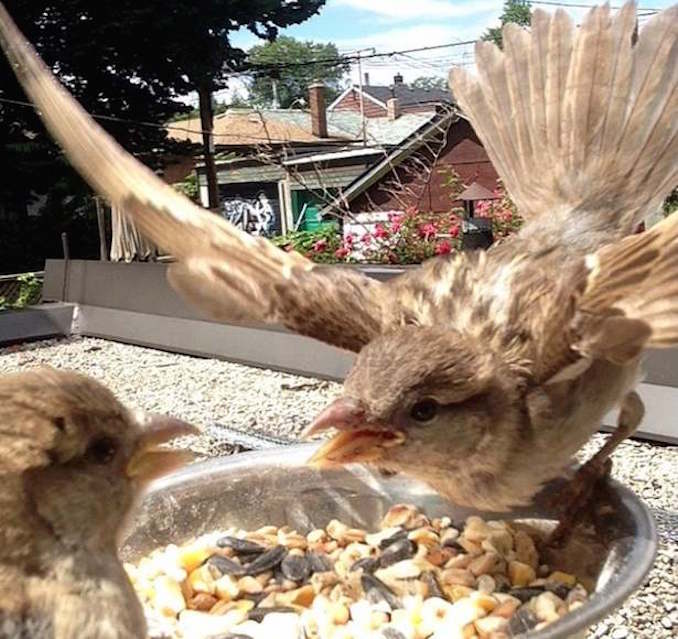
House sparrow is actually not a sparrow at all, but rather its a weaver finch, a sub-species of the Finch family. Their plumage is mostly different shades of grey and brown. The sexes exhibit strong dimorphism – both sexes can be seen sharing the bowl in Dan’s photos, and yet the male and female look nothing alike. The female is mostly beige brown above and below, while the male has boldly coloured head markings, a reddish back, and grey underparts.
The male house sparrow is easily identified by its black throat and chest, which makes him appear as if he is wearing a bib. The female is much harder to discern and is often confused with Song Sparrows and Field Sparrows, to name only a few. Identifying sparrows is tricky. You can see all Dan’s photos in the Birds of Toronto photo gallery, and I think you’ll agree his pictures are among the best recorded thus far.
Good work Dan Sheridan.


